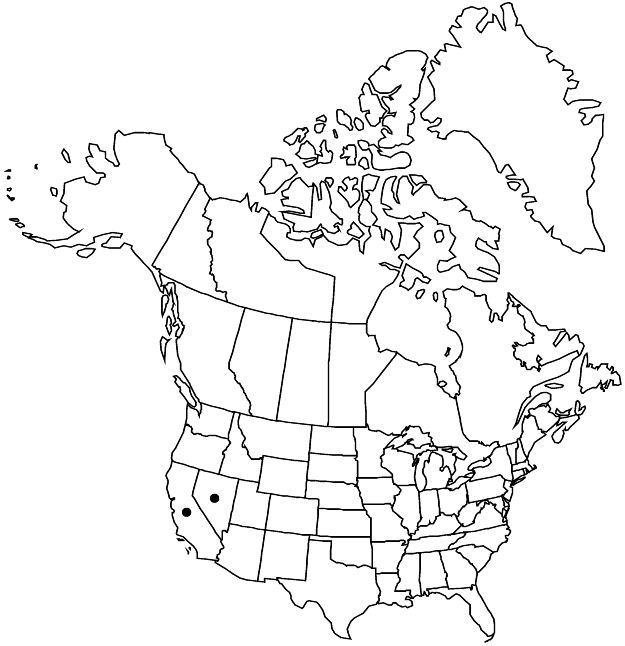Difference between revisions of "Glossopetalon pungens"
Bot. Gaz. 27: 445. 1899.
FNA>Volume Importer |
(No difference)
|
Revision as of 23:05, 26 July 2019
Shrubs forming relatively low mounds or mats, 5–20 cm. Stems: branchlets usually ascending, sometimes divaricate, green to yellowish green during 1st year, soon turning yellowish brown, slender, 0.5–1 mm diam.; bark of older branches dark brown to black; tips not or weakly spinescent; glabrous or sparsely to ± densely puberulent. Leaves: stipules absent; petiole base ± persistent, not or only slightly thickened, not darkened or glandular; blade oblanceolate to narrowly elliptic, 6–10 × 3–5 mm, margins thickened, apex acute or short-acuminate, mucronate, mucro 0.6–1.2 mm, glabrous or scabridulous. Inflorescences terminal, usually flowers solitary. Flowers: sepals 5, ovate, 2–3 mm, slightly unequal, tips spinescent; petals 5, narrowly to broadly oblanceolate, 6–8 × 1.5–2.2 mm; stamens 10, in 2 unequal series, longer opposite sepals. Follicles 1(–3), ovoid to broadly ellipsoid, 2.5–4 mm, moderately striate, usually sparsely puberulent, sometimes glabrous.
Phenology: Flowering Apr–Jul.
Habitat: Crevices and ledges of limestone cliffs and outcrops
Elevation: 1300–2400 m
Discussion
Of conservation concern.
Populations of Glossopetalon pungens in the mountains of San Bernardino County, California, tend to occur at lower elevations than do those in Clark, Lincoln, and Nye counties, Nevada. The California plants also have glabrous leaves (the basis of var. glabrum); most of the Nevada plants have densely scabridulous leaves. Both glabrous and hairy plants sometimes have strongly veined leaves that appear somewhat corrugated, at least on herbarium specimens.
Selected References
None.
